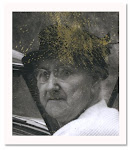I found a site last night that purported to explain how to create double exposures. It was utter nonsense. It had nothing to do with a real double exposure and was nothing more than explaining how to do layers using photo editing software. Though many of the images were striking, they weren't double exposures. This sits in the craw of old timers like me. Don't use old terminology to explain something you're doing today that has no similar reference point.
Generally a real double exposure was an accident, but not always. Some people did successfully find ways to make film not advance or go back so that they could create a double exposure. They were still at the mercy of the camera and had no idea what they would get until they processed the negative and print.
double exposure noun the repeated exposure of a photographic plate or film to light, often producing ghost images.
• the photograph that results from such exposure.Obviously this is not the same as placing layer after layer of images into one document in Photoshop where you're in control every step of the way.
Before computers you could play in the darkroom with multiple negs and create all sorts of wonderful images. I did it myself and recall an especially odd print of Mick Jagger with a fern sticking out of his nose. Oh to still have that odd print. And no, it wasn't a real photo of Mick. It was a shot I'd taken of an album cover and some tropical ferns in the backyard. I'm sure it was funnier at the time, thanks to the overwhelming smell of developing chemicals, than it would ever be if I saw it today. Best to keep it as a vague memory.
I continue to search for double exposures, but the pickin's now are pretty slim. I believe most people tossed them with disgust when they got their prints.
One of the joys in this category are ghost people. Don't believe in ghosts? Really? What more proof do you need?

This is the happiest group of ghosts I've ever seen. A ghosts day out at the lake. I believe they might have been institutionalized ghosts.
Have some double exposures you'd like to share or links to images? Let me know and I'll include them in this post. It's a category!
Here are a couple links to images I've posted in the past, including yesterdays post:
The LOST "ART" of the Double Exposure
DOUBLE EXPOSURE Rosa and Rodrique
CATEGORY and SUBCATEGORIES GALORE!
Here's a grouping at another site:
House of Mirth
And here are two submitted by online friends:
From Nancy at Nancy's Family History Blog
From Jim at DullToolDimBulb.

















I love this photo. I wonder what you call the "the movement" of the subject back in the day of reaaaaaaaaaaaaaly slow exposures? They weren't doubles.. but they made ghosts too.
ReplyDeleteYou're thinking of time exposures. Yes, they were fun. You can still do them with some digital cameras.
DeleteThis is a great subject and a true accidental art-form. I agree that using digital software to mimic the ghosts is NOT double exposure. I know that there were some multi-exposures in early photography methods like ambrotypes and tintypes but I don't think they were common, perhaps because it was a professional photographer's camera. But the first consumer cameras required remembering to twist the film advance and the double exposure became a common surprise in the developing room. In more recent decades, more cameras came equipped with automatic advance and the ghosts became fewer. I just got a new Canon G-15 which is so smart it can recognize faces, give them names and remember their birthday. I think it might actually be offended if I asked it to do a double exposure.
ReplyDeleteIf you have any you'd like to link to Mike, just let me know.
DeleteThat new fangled camera of yours sounds a little scary. Are you sure an operator is even needed?
The spiritualist movement of the 19th century gave birth to a whole genre of photography, placing images of the dead in a photo, interacting with their living relatives. These photographs were almost always done in a darkroom. I noticed, in your picture, the background seems to be one image, with no overlap from a second camera exposure. I'm about 99% certain that this photo was made in a darkroom. If you went into a traditional photo lab and asked for a double exposure, the printer would know what you wanted, but when done in the darkroom, it's called photo composing. When I worked in darkrooms, I could do a nice photo composition in about ten minutes, and would charge our customers twice what we charged for a regular image. When we added a digital department, our computer guys could make the same image in two days, we charged in the hundreds, and lost money on salary alone. But hey, it was digital, and hence superior. (Now I'm venting.) I've recently been to a show of photos by Kansuke Yamamoto at the Getty center in Los Angeles. He was a master of photo composition. He was part of the Japanese surrealist movement rather than a spiritualist.
ReplyDeleteThat's interesting. I like it even better thinking someone wanted these crazy ghosts on holiday.
DeleteI'll lookup Yamamoto.